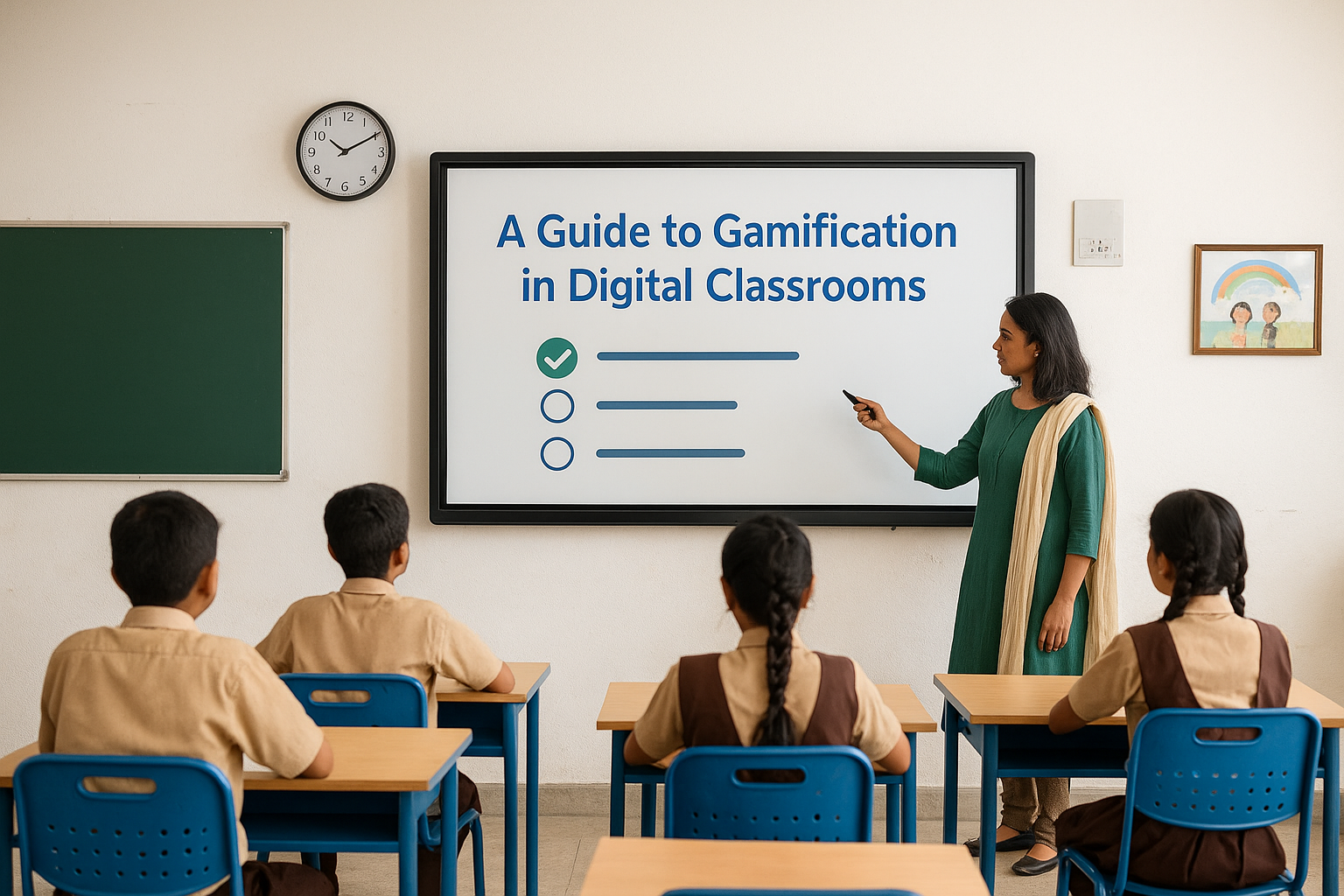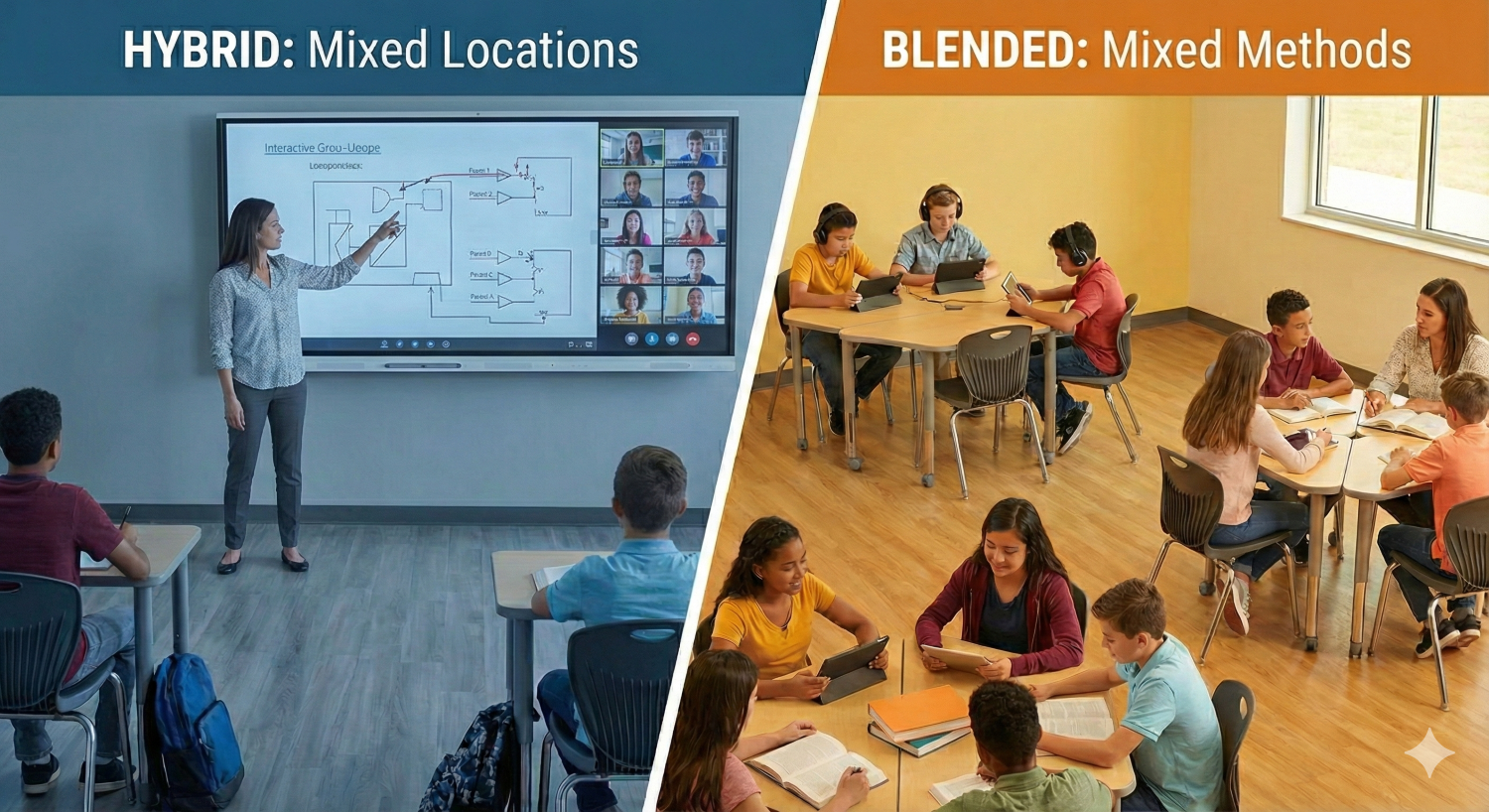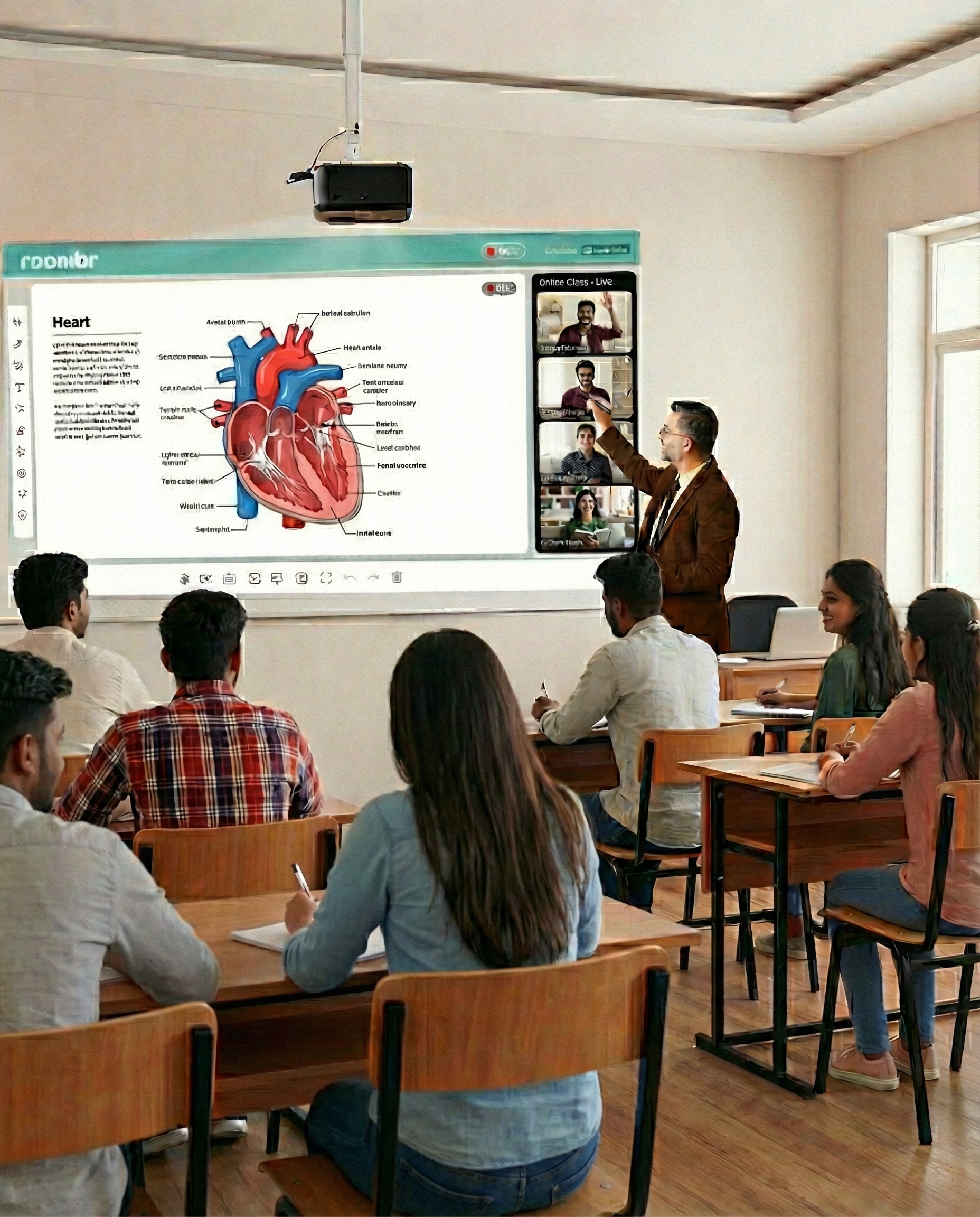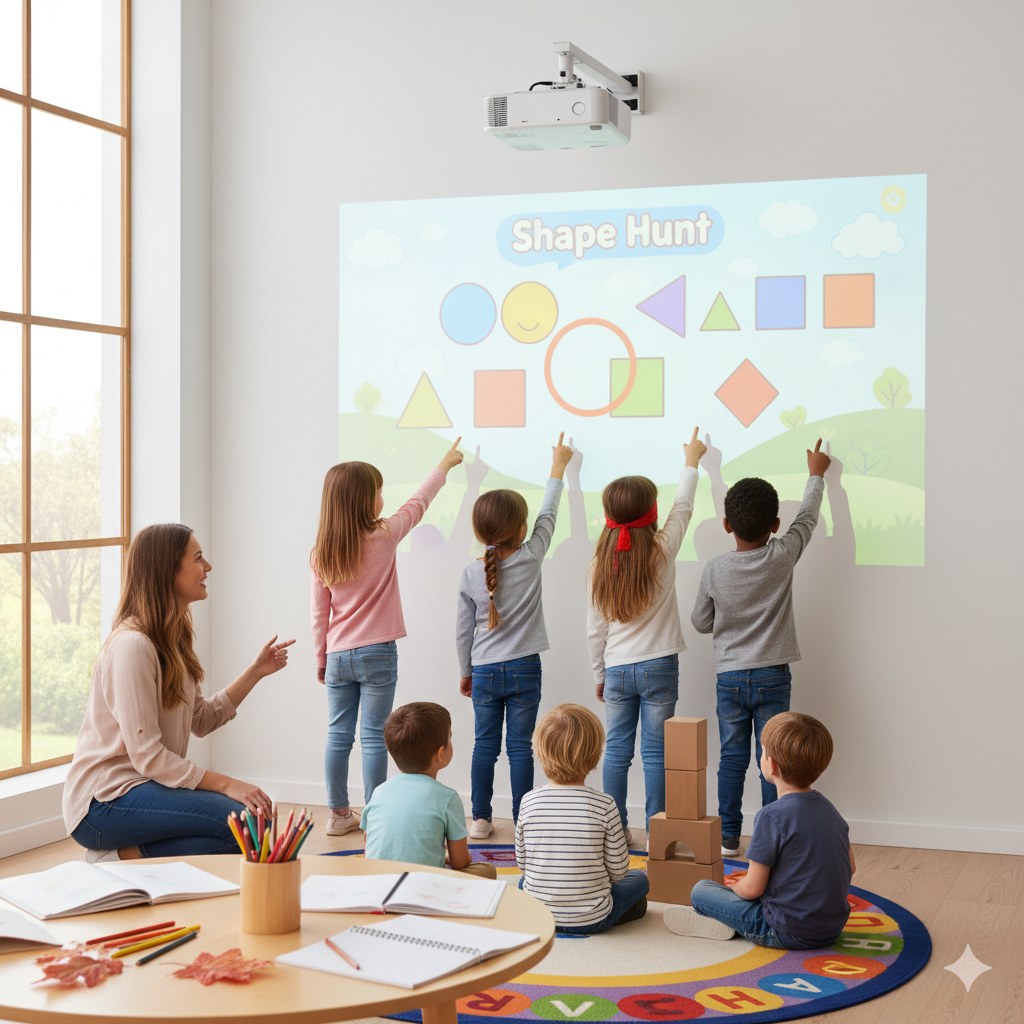Digital Classroom: Healthy Competition vs. Harmful Gamification

Digital classrooms are reshaping the learning experience for students across India. Tools that once looked experimental, quizzes, badges, and leaderboards, are now common in smart classes. Many educators use gamification to keep lessons engaging and interactive. But while competition can inspire, too much of it may harm student wellbeing. The challenge is in maintaining the right balance.
Why Gamification Is Popular in Digital Classrooms
Gamification has entered classrooms for a reason. When students see scores rise or badges unlocked, they feel motivated to try harder. In schools and colleges where attention spans are shrinking, this instant feedback works better than waiting for a term-end report card.
Smart classroom equipment like interactive panels, digital whiteboards, and quiz apps make gamification easy to set up. Teachers can design quick polls or timed challenges to keep students engaged. For administrators, this looks like proof of modern teaching. And for students, it feels closer to the digital experiences they enjoy outside the classroom.
Healthy Competition in Smart Classes
When used well, gamification builds confidence. A quiz at the end of a history lesson helps students recall facts in minutes. Group challenges in a digital smart classroom encourage teamwork, not just individual performance.
Healthy competition also gives quieter students a chance to participate. Some may hesitate to speak up in a class of fifty, but they are comfortable submitting digital responses. This shift helps balance opportunities in India’s large, diverse classrooms.
There’s also a cultural aspect. In India, academic competition is already a familiar part of schooling. Smart classrooms that use points, levels, or rankings in moderation can channel that energy in a healthier way. Instead of only focusing on marks, digital rewards can celebrate creativity, persistence, or collaboration.
When Gamification Becomes Harmful in a Digital Classroom
The downside appears when competition takes over the learning process. If every class ends with a ranking board, weaker students may feel discouraged. They begin to compare themselves constantly, not with their past performance, but with peers who may have different strengths.
Teachers in K-12 settings often report this challenge. A student excited in the first few weeks may lose motivation after repeated low scores. This pressure can lead to stress, anxiety, and in some cases, withdrawal from class activities.
Gamification can also push the wrong behavior. Some students chase points without understanding the subject deeply. For example, memorizing quiz answers to win badges but failing to apply concepts in real-life situations.
Another concern in Indian classrooms is scale. In schools with 60–70 students per section, competition-heavy gamification may only reward the top 5–10. The majority feels invisible. That is where gamification shifts from helpful to harmful.
Finding Balance: Healthy vs. Harmful Gamification

Striking the right balance requires thoughtful design. Gamification should not be about constant rivalry. Instead, it should highlight progress and effort. For example, rather than only showing class rankings, teachers can set milestones like "improved by 20% this week" or "completed all practice quizzes."
Peer recognition can also make a difference. Students value appreciation from classmates as much as points from a system. Simple features like "vote for the most creative idea" keep competition light and collaborative.
Inclusivity is key. A smart classroom setup should mix activities that reward knowledge, creativity, teamwork, and persistence. That way, every student gets a chance to shine in different ways.
At the same time, teachers need to rotate gamified elements. If quizzes dominate every lesson, they lose charm. Mixing in storytelling, project-based tasks, and reflective discussions ensures students stay engaged without feeling pressured.
India-Specific Considerations for Digital Classrooms
Gamification in India cannot ignore the social and cultural context. Many parents still equate success with high scores. If digital classrooms overuse leaderboards, it may add to this pressure. Instead, schools should frame gamification as a way to build skills for the future—critical thinking, collaboration, and digital literacy.
Infrastructure also matters. In urban private schools, smart class equipment allows advanced gamification tools. But in rural schools or government institutions, the setup may be simpler. Teachers here must adapt low-tech gamification—group storytelling, peer quizzes, or simple interactive polls—that focus on learning, not just rewards.
Language diversity is another factor. India’s classrooms are multilingual. Gamification that supports multiple languages ensures fair participation. Otherwise, students from regional-medium backgrounds may feel excluded in a digital classroom setup.
Final Thoughts
Gamification in digital classrooms is not good or bad by itself. Its impact depends on how schools and teachers design the experience. When balanced well, competition fuels enthusiasm, supports collaboration, and makes learning fun. But harmful gamification creates pressure, exclusion, and shallow learning.
For India’s educators, the goal should be clear: build digital classrooms where competition encourages growth, not anxiety. When designed with care, gamification can shift from a race for points to a journey of meaningful learning.
At Roombr, we believe a digital classroom should be more than interactive screens—it should create balanced, inclusive, and student-friendly spaces. Explore more insights on building smart classrooms that work for both learning and wellbeing.
Foziya Abuwala
Share
Step Into the future of
Education with Roombr

















